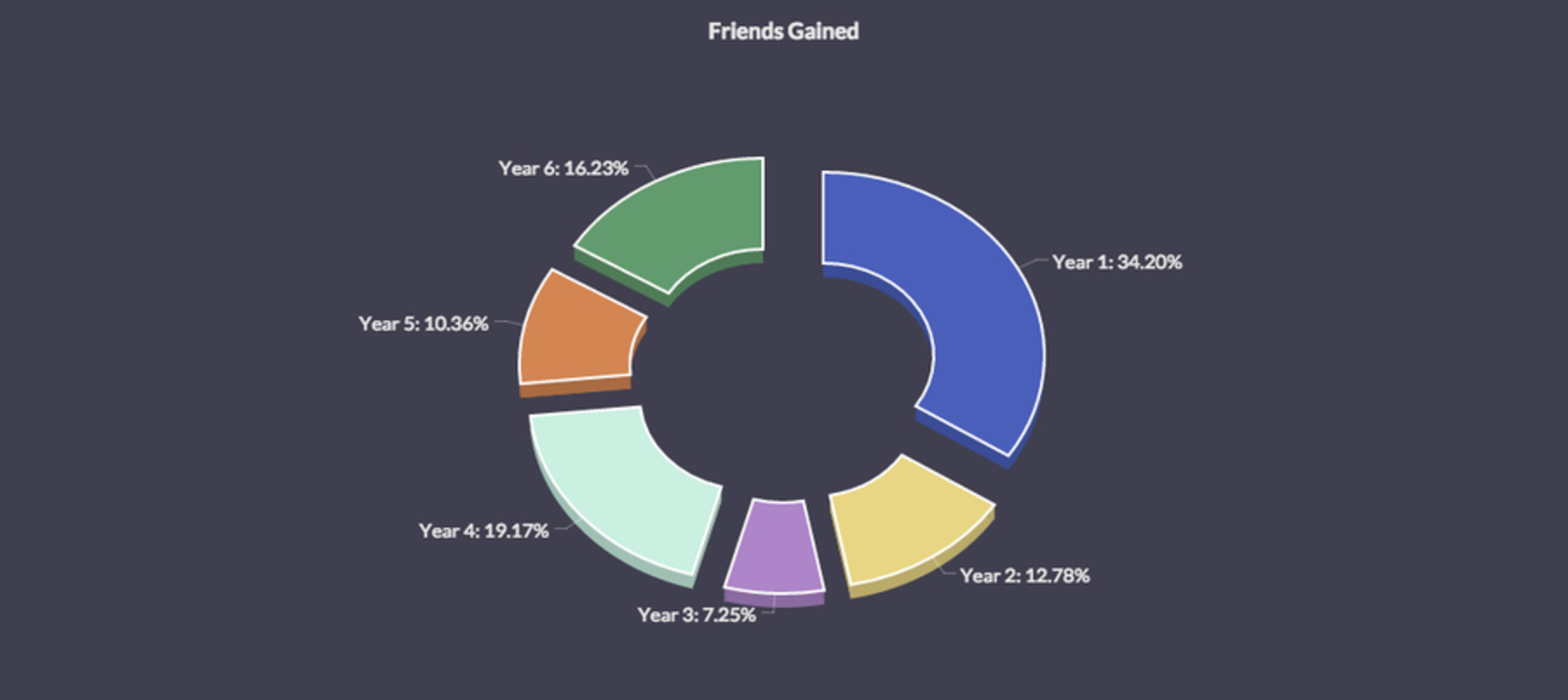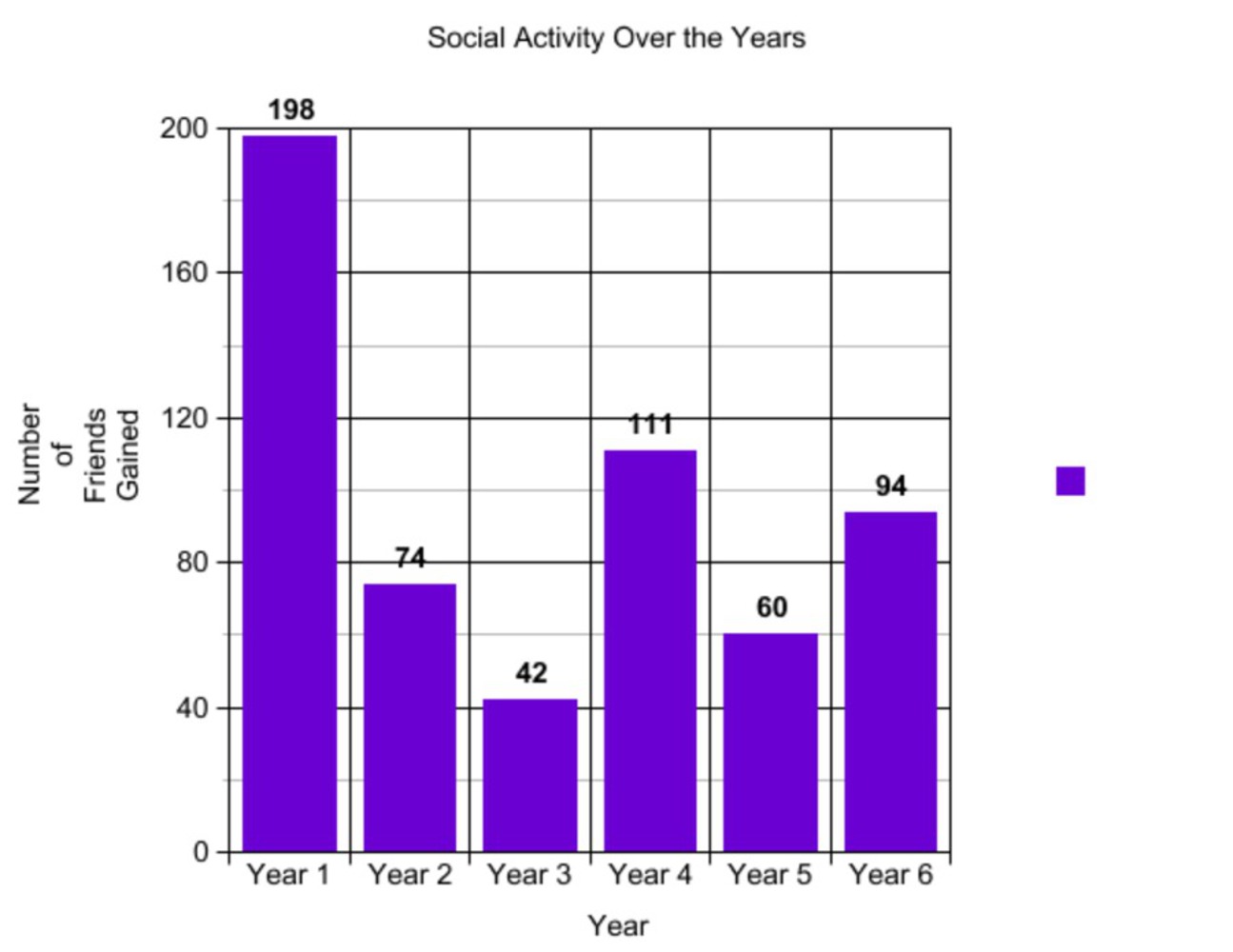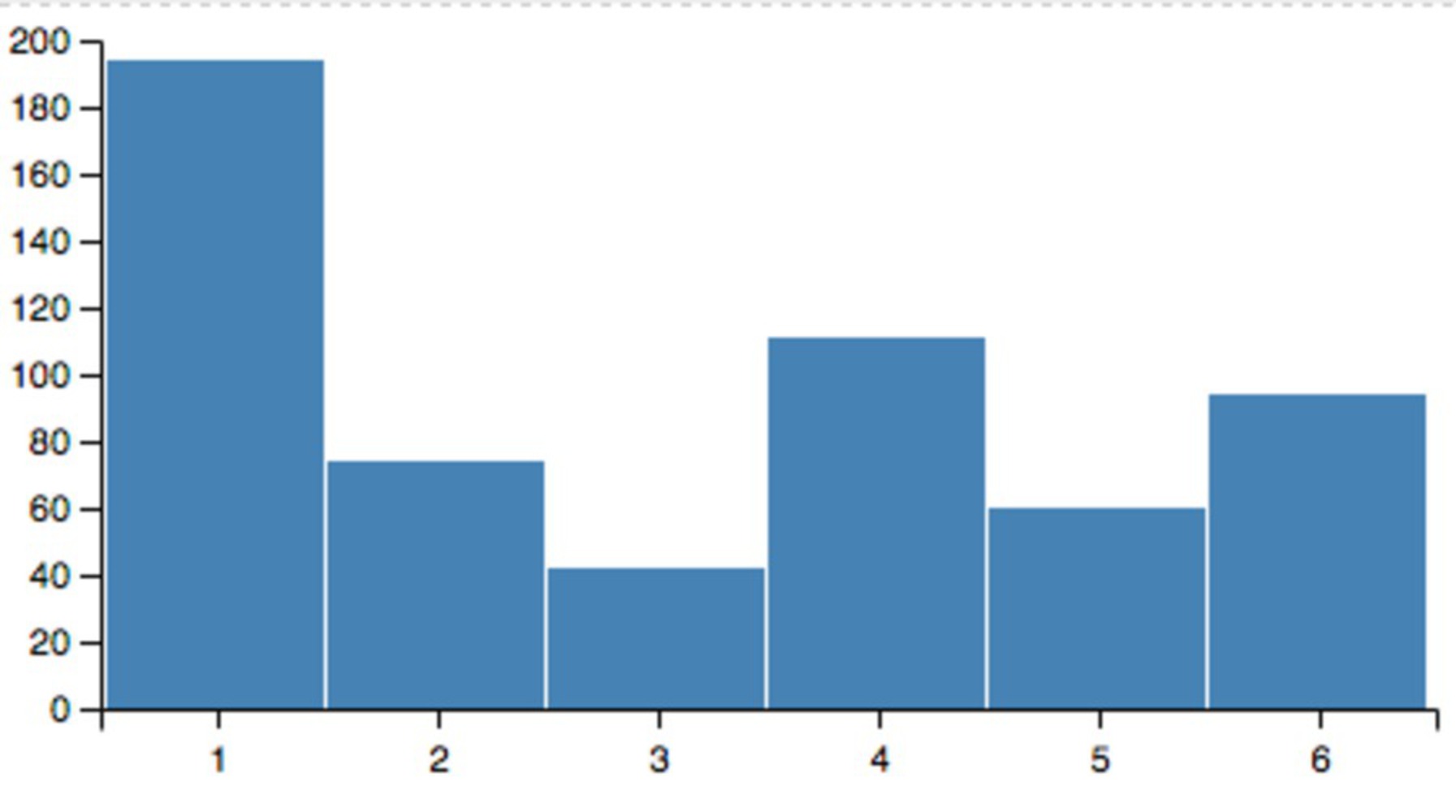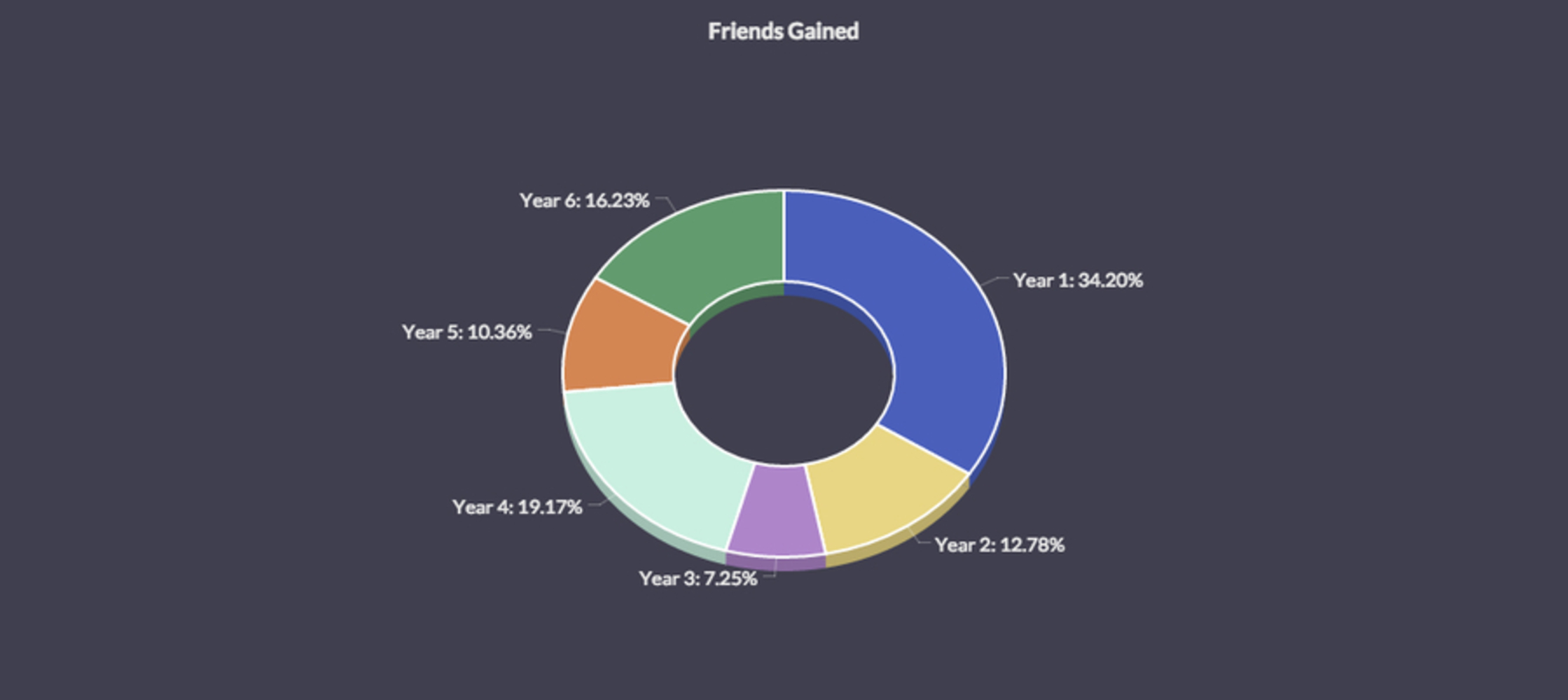Product
Detail what you created. What did you create, how, etc. What methods or techniques did you use? What tools and technologies were involved? Include images, code or video.I wanted to use real data but I wanted to make it personal data because I personally found that mining through datasets of random things did not interest. So I came up with the idea to analyze 'how social I've been' over the years. To do that, I wanted to use my Facebook friends I've added. Thus, because I created my Facebook account in the beginning of November in 2009, the data spans 6 years. The Years start from start of November of Year X until end of October of Year X+1
Year 1 - Freshman, High School
Year 2 - Sophomore, High School
Year 3 - Junior, High School
Year 4 - Senior, High School
Year 5 - Freshman, College
Year 6 - Sophomore, College
My product was this 3D Donut Chart.





